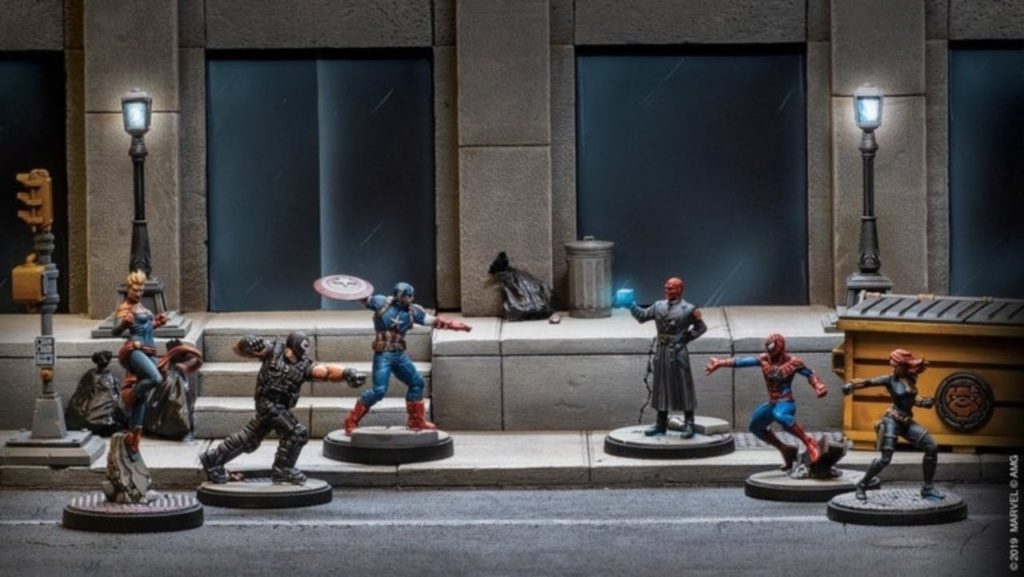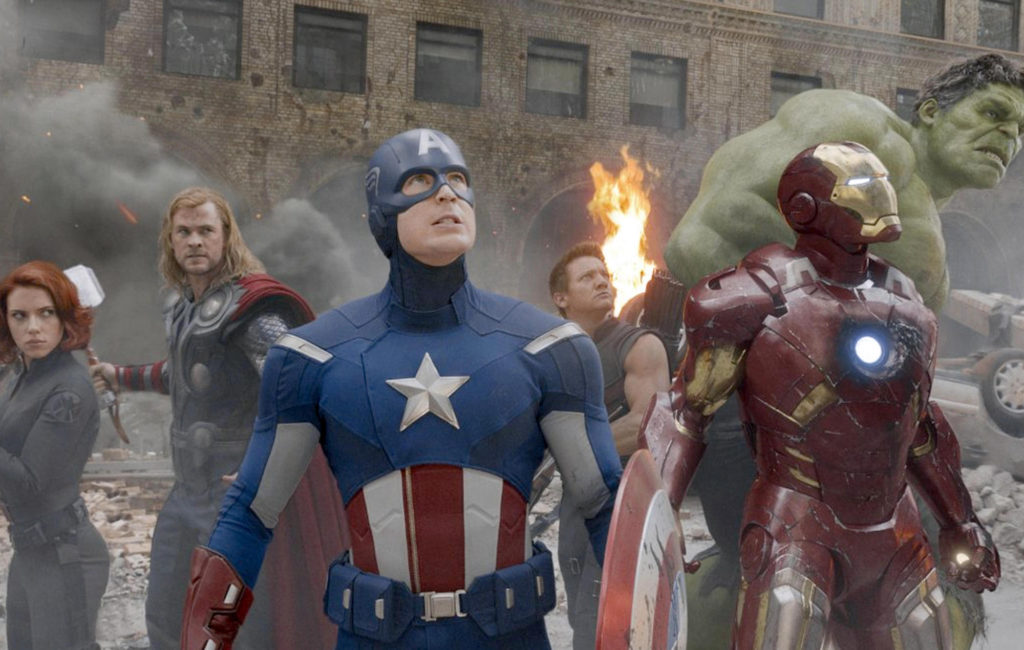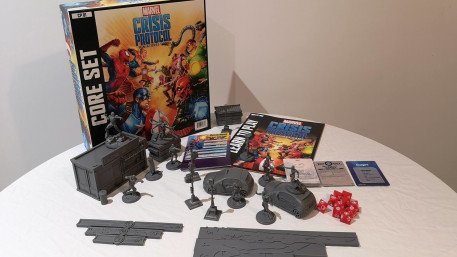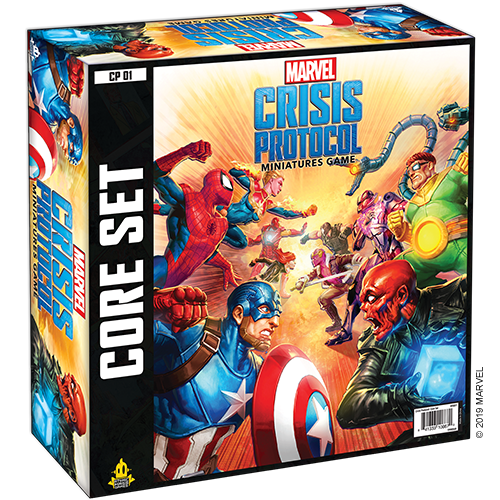While Warhammer 40k has been my main miniatures game of choice sometimes it is nice to have a different game to fall back on if I am looking to take a short break from 40k. Maybe my poor GSC have been tabled for the 10th time, my brain will not allow me to 40k any longer, or the Admech Codex just released. During the times I find myself not interested in a game of 40k I turn to Marvel Crisis Protocol. Marvel Crisis Protocol is the game I go to when I am looking to play an amazing miniatures game that may seem simple at first, but becomes a complex and immersive gaming system once you get the basic rules down.

First, I have to mention, the models for this game are amazing. I am never going to win any awards for painting regardless of the game I am playing, or the miniatures I am painting, but MCP gives me the best chance! The models are dynamically posed and they are just large enough that painting some of the smaller bits on them isn’t a chore. Being a skirmish game there is much less painting required also. Painting the ten characters that come in the MCP Core Set sure was more fun then painting 60 Necron Warriors. I also find, even though I am not a great painter, my MCP models come out much nicer then any 40k miniatures. This is because all of the color schemes, color theory, and other things people probably think about before they paint their minis has been done by those cool people who draw comic books.
The game itself is simple to learn, but is very complex and hard to master. Before a friend of mine picked this game up from a local shop the shop employee told him this game was, “nice to play if you were looking for something that didn’t require a lot of brain power”. This is true in that you can pick up the MCP Core Set, build the models and terrain included, play one or two learning games, and then have a firm understanding of how the main rules of the game work. If you wanted nothing more then a simple game of, “I shoot my character’s laser beam eyes at your character’s shield”, MCP can provide that type of gaming experience.
However, the true fun of this game comes in the amount of complexity it manages to cram into its simple core rules. Each Character you bring to the table has extremely unique abilities (sometimes found only on a single character card throughout the entire game), and the complexity comes in solving the puzzle of how best to use your Character’s abilities to solve the puzzle that is the mission scoring in this game.

The missions in MCP are generated by cards chosen by the players before the game, and there are quite a few to choose from now. While there are only 2 missions cards in play during a game, and a score of only 16 points to win, the various combinations of mission cards make for some very interesting games. Some games you will need to search for a specific objective, or hold the mid-table, or snatch and grab a healing herb to bring back to your side of the table. Having a plan to deal with a variety of mission choices is were the next enticing part of the game comes in.
The pre-game planning in MCP fills the same role as writing an army list in 40k. I have spent a lot of time going over my pre-game roster of 10 Characters, and now that MCP has a TON of Characters released 10 seems like too few! Before coming to the table to play a game of MCP the players pick a Roster of 10 Characters, the mission cards they would like to be able to play, and tactics cards that can be used during the game. Throwing in this mini-game of deck building was an amazing idea by the creators of MCP. We all know how many 40k army lists we write in between the time until our next game, and MCP has this (on a smaller scale) as well!
The game also has mechanics built in for throwing the terrain found on the tabletop into things. Be it a building or a lamp post it can be used as a projectile. The game mechanics handle terrain interaction in a streamlined way, but, honest, I could care less how it was implemented into the game. I am just so thankful M.O.D.O.K. can throw a cement mixer into my enemies.
The biggest compliment I can pay to this amazing game is how immersed I feel when playing it. Sometimes 40k can devolve into a game of chasing points with little attention paid to the narrative of a game, but MCP make this impossible. Sure, there is still a points system, and a winner and loser, but this game captures the cinematic moments in an entertaining way. There is nothing better than when Crossbones (who is basically just a street thug who lifts real hard bro) squares off against Captain Marvel in order to take back an objective. Poor Crossbone used his Haymaker attacks all day, but Captain Marvel didn’t seem impressed.

If you are looking for a simple to learn, hard to master, game with amazing models and game modes Marvel Crisis Protocol is for you. All you need to play a full game is the Core Set. Terrain is included, 10 Characters with all their cards are included, and a ton of tokens are included. Fair warning, once you get the Core Set and play a game or two those character expansion packs will be calling your name.

